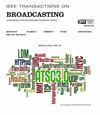Retouched Face Image Quality Assessment Based on Differential Perception and Textual Prompt
IF 4.8
1区 计算机科学
Q2 ENGINEERING, ELECTRICAL & ELECTRONIC
引用次数: 0
Abstract
Face retouching involves using digital techniques to alter an individual’s appearance, commonly using in social media. However, excessively retouched face (RF) images can lead to issues such as unrealistic beauty standards and psychological stress. Therefore, it is crucial to develop a reliable quality assessment method for RF images. In this paper, we propose a novel network named DIRF-IQA for RF image quality assessment (IQA). DIRF-IQA mainly includes a parameter-shared image encoder, a text encoder, and three key components, namely the Differential Feature Attention Module (DFAM), the Text-image Interaction Module (TIM), and the Multi-scale Feature Fusion Module (MFFM). Specifically, the DFAM captures both local and global differences between original and retouched images by processing multi-scale features and utilizing cross-attention and self-attention blocks for differential perception. In the TIM, textual prompts summarizing retouching operations are encoded by a text encoder and integrated with differential features extracted by the DFAM to enhance the understanding of distortions in RF images. The MFFM then fuses these text-enhanced features across different layers and combines them with the global differential feature to predict the quality of the retouched images. We conduct extensive experiments on two RF IQA databases and the results demonstrate the superiority of DIDF-IQA compared to 12 state-of-the-art full-reference IQA methods in evaluating RF images.基于差异感知和文字提示的修饰后人脸图像质量评估
面部修饰包括使用数字技术来改变个人的外表,通常用于社交媒体。然而,过度修饰的脸部图像会导致诸如不切实际的审美标准和心理压力等问题。因此,开发一种可靠的射频图像质量评估方法至关重要。本文提出了一种用于射频图像质量评估(IQA)的新型网络DIRF-IQA。DIRF-IQA主要包括一个参数共享图像编码器、一个文本编码器和三个关键组件,即差分特征注意模块(DFAM)、文本图像交互模块(TIM)和多尺度特征融合模块(MFFM)。具体而言,DFAM通过处理多尺度特征并利用交叉注意和自注意块进行差异感知,捕获原始图像和修饰图像之间的局部和全局差异。在TIM中,总结修图操作的文本提示由文本编码器编码,并与DFAM提取的差分特征集成,以增强对RF图像失真的理解。然后,MFFM将这些文本增强的特征融合到不同的图层中,并将它们与全局差分特征相结合,以预测修饰后图像的质量。我们在两个RF IQA数据库上进行了广泛的实验,结果表明,与12种最先进的全参考IQA方法相比,DIDF-IQA在评估RF图像方面具有优势。
本文章由计算机程序翻译,如有差异,请以英文原文为准。
求助全文
约1分钟内获得全文
求助全文
来源期刊

IEEE Transactions on Broadcasting
工程技术-电信学
CiteScore
9.40
自引率
31.10%
发文量
79
审稿时长
6-12 weeks
期刊介绍:
The Society’s Field of Interest is “Devices, equipment, techniques and systems related to broadcast technology, including the production, distribution, transmission, and propagation aspects.” In addition to this formal FOI statement, which is used to provide guidance to the Publications Committee in the selection of content, the AdCom has further resolved that “broadcast systems includes all aspects of transmission, propagation, and reception.”
 求助内容:
求助内容: 应助结果提醒方式:
应助结果提醒方式:


